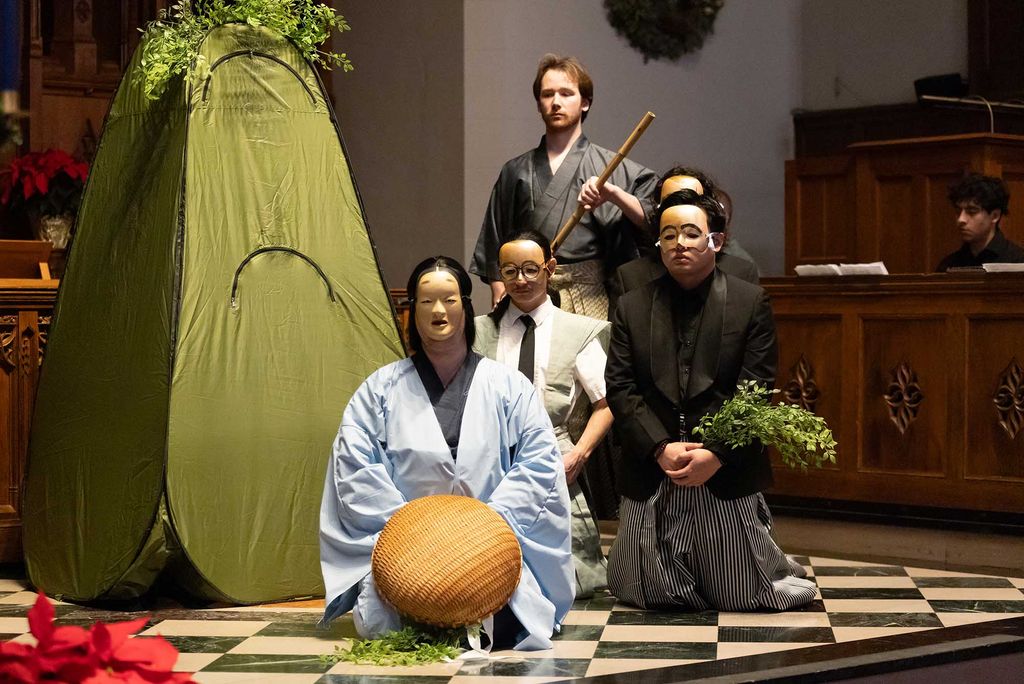CFA Senior’s Thesis Blends Traditional Japanese Noh Theater with Western Opera
Chris Ellars’ Here Where the River Forever Divides Them is a hybrid of the Noh play Sumida River and the 20th-century British opera Curlew River

Christopher Ellars (CAS’24, CFA’25), a dual Japanese and voice performance major. Photo by Cydney Scott
CFA Senior’s Thesis Blends Traditional Japanese Noh Theater with Western Opera
Chris Ellars’ Here Where the River Forever Divides Them is a hybrid of the Noh play Sumida River and the 20th-century British opera Curlew River
This article was originally published in BU Today on February 18, 2025. By Alene Bouranova
EXCERPT
It’s not every day you stumble across a traditional Japanese Noh performance on campus—especially one blended with a British opera. But that’s precisely what one Boston University College of Fine Arts senior staged for his thesis project.
Here Where the River Forever Divides Them, conceptualized, directed, and starring Christopher Ellars (CAS’24, CFA’25), is a hybrid of the famous 15th-century Noh play Sumida River and the mid-20th-century British chamber opera Curlew River, with music by Benjamin Britten and libretto by William Plomer, which itself was inspired by Sumida River. Ellars, along with CFA classmates, performed Here Where the River Forever Divides Them for the first time in December at Marsh Chapel. (Watch the full video here.)
So what exactly is Noh? Originated in the 14th century, Noh theater is a traditional form of Japanese theater combining dance, drama, and music. It’s the official art form of Japan and is considered the oldest consecutively performed theater form in the world. Unlike the better known Kabuki, Noh is more reserved: performers wear wooden masks, sing in a chant-like monotone, and move across the stage in minute, symbolic movements.

Ellars, who is double majoring in Japanese and voice performance, grew up in a family of musicians and fell in love with Japanese culture at a young age. When it came time for college, he knew he wanted to attend a school that had strong language and performing arts programs—thus ending up choosing BU.
He’d heard of Noh prior to college, but didn’t know much about it until he started researching Japanese performing arts for one of his classes.
“Noh has this stereotype of being terribly boring, because it can look like nothing is happening on stage [since the performers move so slowly],” Ellars explains. The music can also seem inaccessible to non-Japanese audiences, because it’s largely chant- and drum-based, as opposed to being more symphonic, and initially, he acknowledges, he “wasn’t into Noh at all because it was so different.”